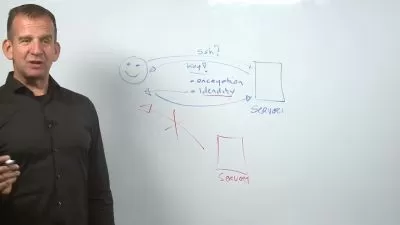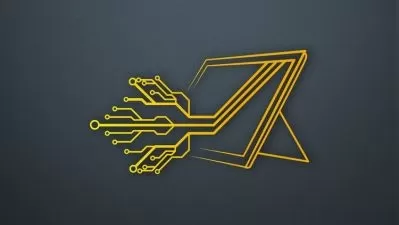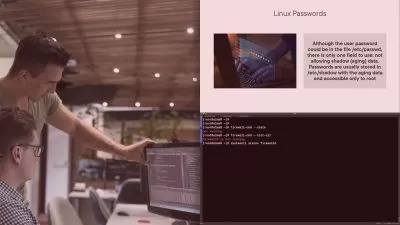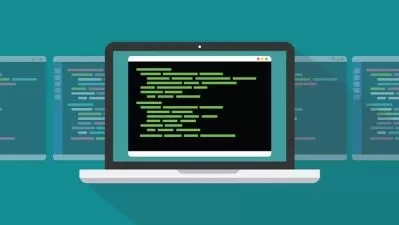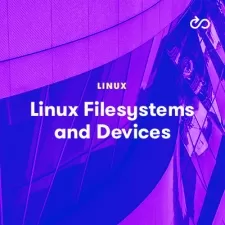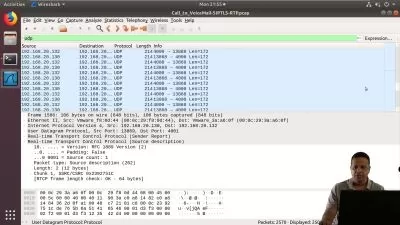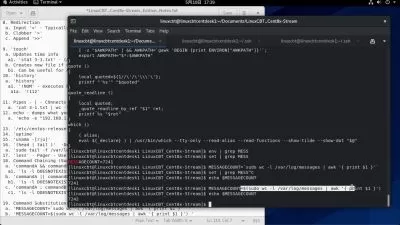Learning the Essentials of CentOS Enterprise Linux 7 Administration
Focused View
Andrew Mallett
6:42:32
98 View
1. Course Overview.mp4
02:11
1. Welcome to the LFCS.mp4
06:08
2. Lets Look at How You Will Learn.mp4
06:53
3. Summary and Whats Next.mp4
01:08
1. Introduction to Installing CentOS 7.mp4
04:29
2. CentOS Downloads.mp4
03:08
3. VirtualBox Networking.mp4
04:02
4. Install from Physical Media.mp4
07:40
5. Install from Network and Internet.mp4
04:33
6. Configure CentOS 7 Networking.mp4
06:24
7. Installing X.mp4
07:02
8. Add Guest Additions.mp4
06:03
9. Summary and Whats Next.mp4
03:20
1. Welcome to the Command Line.mp4
03:17
2. Accessing Consoles.mp4
08:13
3. Listing Files.mp4
06:55
4. File Types.mp4
08:16
5. Working with Files.mp4
08:28
6. Working with Directories.mp4
09:20
7. Working with Links.mp4
09:37
8. Summary and Whats Next.mp4
07:11
1. Tools That We Use to Read from Files.mp4
01:25
2. Reading from Files.mp4
05:41
3. Regular Expressions and grep.mp4
09:54
4. Using sed to Edit Files.mp4
05:46
5. Comparing Files.mp4
09:08
6. Finding Files.mp4
07:20
7. Summary and Whats Next.mp4
08:05
1. Creating and Editing Files in Linux and Using Touch.mp4
05:34
2. Using the nano Text Editor.mp4
02:43
3. Learning vim with vimtutor.mp4
04:52
4. Setting Defaults with .vimrc.mp4
08:26
5. Editing Files with vim.mp4
08:57
6. Summary and Whats Up Next.mp4
05:28
01. Introduction to Pipelines and Redirection.mp4
02:24
02. Redirecting STDOUT.mp4
04:41
03. Using the noclobber Option.mp4
06:46
04. Redirecting STDERR.mp4
03:34
05. Reading into STDIN.mp4
03:26
06. Using HERE documents.mp4
02:01
07. Command Pipelines.mp4
03:04
08. Named Pipes.mp4
04:49
09. Using the Command tee.mp4
04:05
10. Summary and Whats Next.mp4
04:50
1. Introducing Backups.mp4
01:38
2. Using the tar Command.mp4
10:11
3. Using Compression.mp4
07:42
4. Working with cpio.mp4
06:36
5. Imaging with dd.mp4
09:20
6. Summary and Whats Next.mp4
03:40
1. Introduction and Simple Help.mp4
03:28
2. Working with Man Pages.mp4
05:35
3. Working with Info Pages.mp4
02:07
4. Using Version Control Systems.mp4
06:02
5. Summary and Whats Next.mp4
01:54
1. Introduction to Permissions.mp4
05:00
2. Listing Permissions.mp4
03:47
3. Managing Default Permissions.mp4
06:08
4. Setting Permissions.mp4
09:16
5. Managing File Ownership.mp4
07:40
6. Summary and Whats Next.mp4
04:31
1. Introduction to Root Access.mp4
01:34
2. Using su.mp4
03:48
3. Implementing sudo.mp4
07:51
4. Restricting root Access to SSH.mp4
04:41
5. Summary and Whats Next.mp4
01:58
1. Welcome to the SSH Client.mp4
01:27
2. Configuring the SSH Client.mp4
07:50
3. Using Key Based Authentication.mp4
07:35
4. Copy Files Securely.mp4
03:36
5. Summary and Whats Next.mp4
02:32
1. Introduction to Screen and Script.mp4
02:00
2. Using Script as a Collaboration Tool.mp4
04:57
3. Running Commands Across Your Estate with Screen.mp4
08:47
4. Summary.mp4
02:04
Description
Preparing you for the practical exam based on the LFCS and RHCSA, you will learn Red Hat 7.
What You'll Learn?
This is the first in a series of courses designed to support the Linux Foundation Certified SysAdmin and the Red Hat Certified System Administrator practical exams. Based on CentOS 7.2, we get you started with installation before helping your though the basics of working on a CentOS 7 system.
More details
User Reviews
Rating
average 0
Focused display
Category
Andrew Mallett
Instructor's CoursesAndrew is an all around Linux professional with in depth knowledge of the OS and this is supported with scripting in bash, perl, python and ruby and application development in C, C++ and Java.
Having worked for many years in training, Andrew has developed automated course build systems after endless time wasted on Friday nights. The first build system he built was aptly named
"Friday nights." This has inspired his interest in all things deployment related. He has authored training courses on Microsoft Deployment Toolkit as well as countless bespoke PXE solutions
to training organizations.
His commitment to the community shows in the amount of content that he has uploaded to his YouTube channel since theurbanpenguin was founded in 2009, as well as more recently helping with the
Google / Raspberry Pi CoderDojo project. He also teaches Linux in schools.
Over the years Andrew has taught Novell, Microsoft, Lotus Notes, Citrix, Solaris as well as Linux. It is Linux, though, where his love is. Andrew is able to help you understand how the product will fit into your organization and understand the heterogeneous environment we all work in.

Pluralsight
View courses PluralsightPluralsight, LLC is an American privately held online education company that offers a variety of video training courses for software developers, IT administrators, and creative professionals through its website. Founded in 2004 by Aaron Skonnard, Keith Brown, Fritz Onion, and Bill Williams, the company has its headquarters in Farmington, Utah. As of July 2018, it uses more than 1,400 subject-matter experts as authors, and offers more than 7,000 courses in its catalog. Since first moving its courses online in 2007, the company has expanded, developing a full enterprise platform, and adding skills assessment modules.
- language english
- Training sessions 75
- duration 6:42:32
- level preliminary
- English subtitles has
- Release Date 2023/02/27






